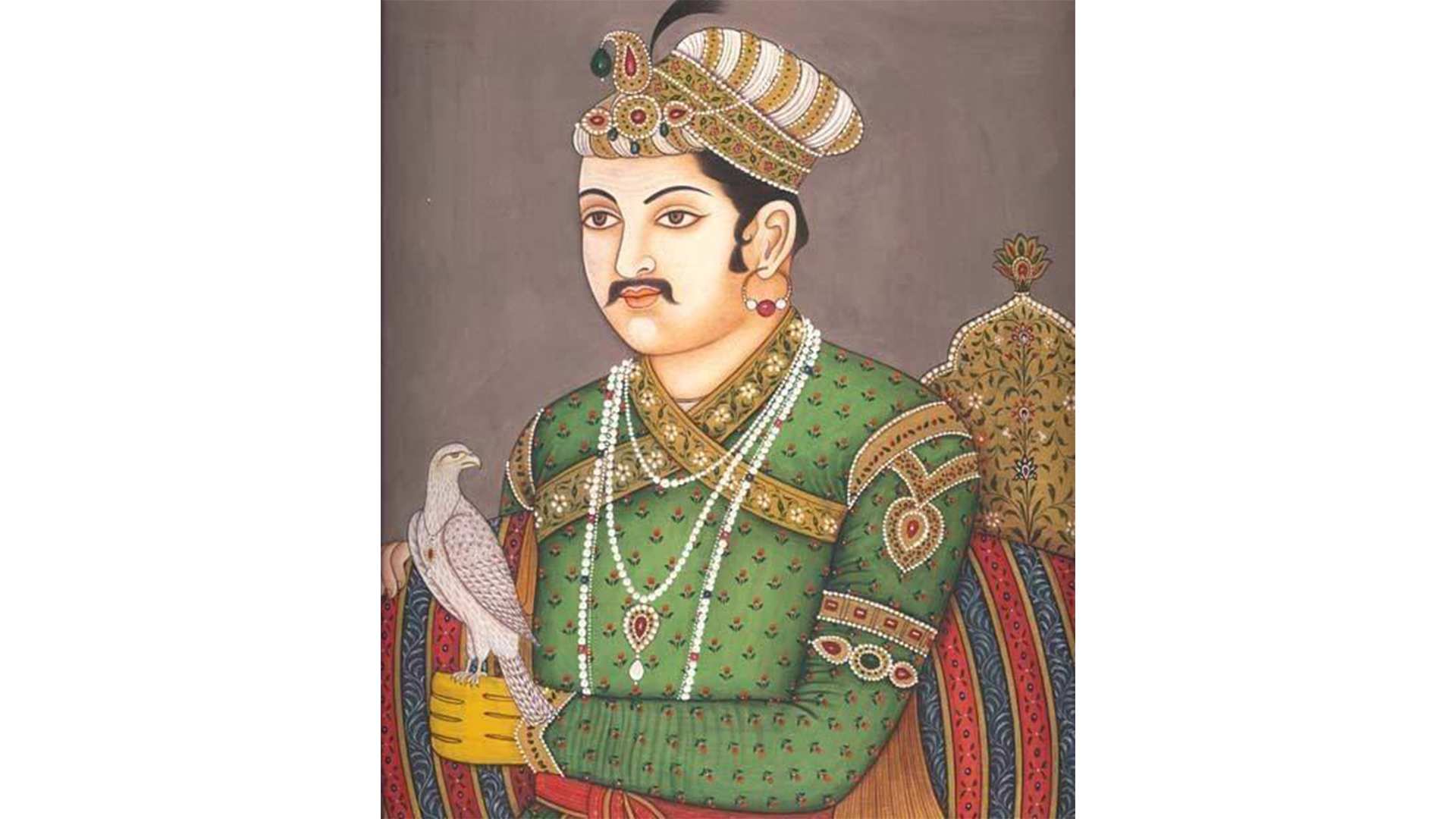Jewelry created in India during the Mughal period (1526-1857) is both recognized and admired by jewelry enthusiasts globally. It is the creative manifestation of the merger of Islamic and Hindu cultures that blended together for that era leaving behind a legacy of art and opulent jewelry that is specific to Indian culture.
The Mughal, (also known as Moghul, or Mogul) dynasty of India dates back to the 1500s. These royals were afficianados of the arts, architecture, clothes, food and jewelry. The Mughals ruled much of northern and central India as well as areas that are now Pakistan and Afghanistan. Jewelry was very important to the Mughal rulers, who literally adorned themselves from head to toe in jewels. Massive turban ornaments, armlets, toe rings, necklaces, bracelets, rings, anklets and more were worn to show status, position and wealth, by both men and women.
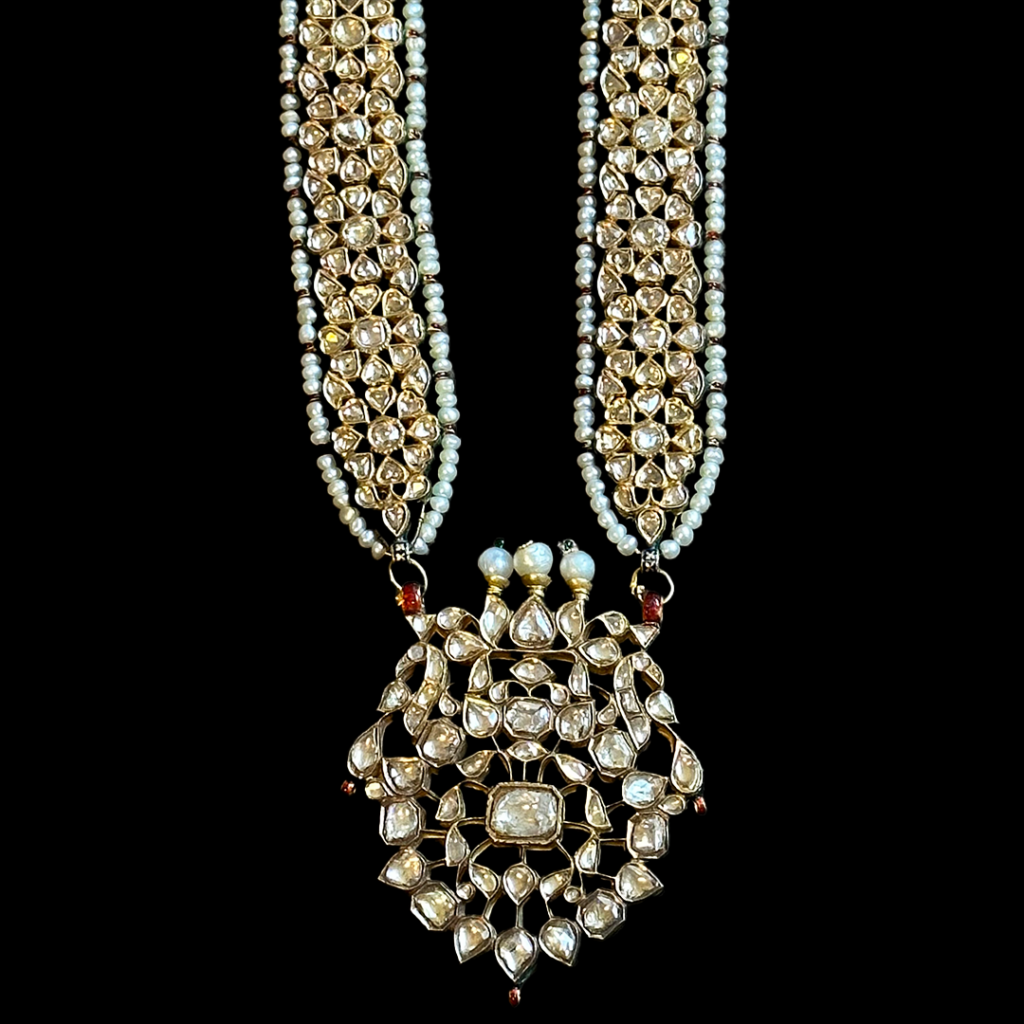
Merging Cultures
Jewelry was so important to the Mughal rulers that they set-up royal workshops where pieces were made using the finest craftsmanship. It often took several artisans, each with their own area of expertise, to create one finished jewel.
Mughal jewelry tends to be big, flamboyant and colorful, bursting with diamonds, gems and enamel. Every visible area of a piece of Mughal jewelry is embellished. The front of Mughal jewelry has an enamel background set with gems, while the back is all enamel. Known as meenakari, enamel is an important part of Mughal jewelry, which combines enamel using Islamic motifs with the Hindu style of goldwork. It is believed that meenakari started in Persia and made its way to India in the 1500s. Mughal Emperor Akbar the Great, who was artistically inclined and culturally tolerant, was a champion of meenakari and the art form thrived during his rule from 1556 to 1605.
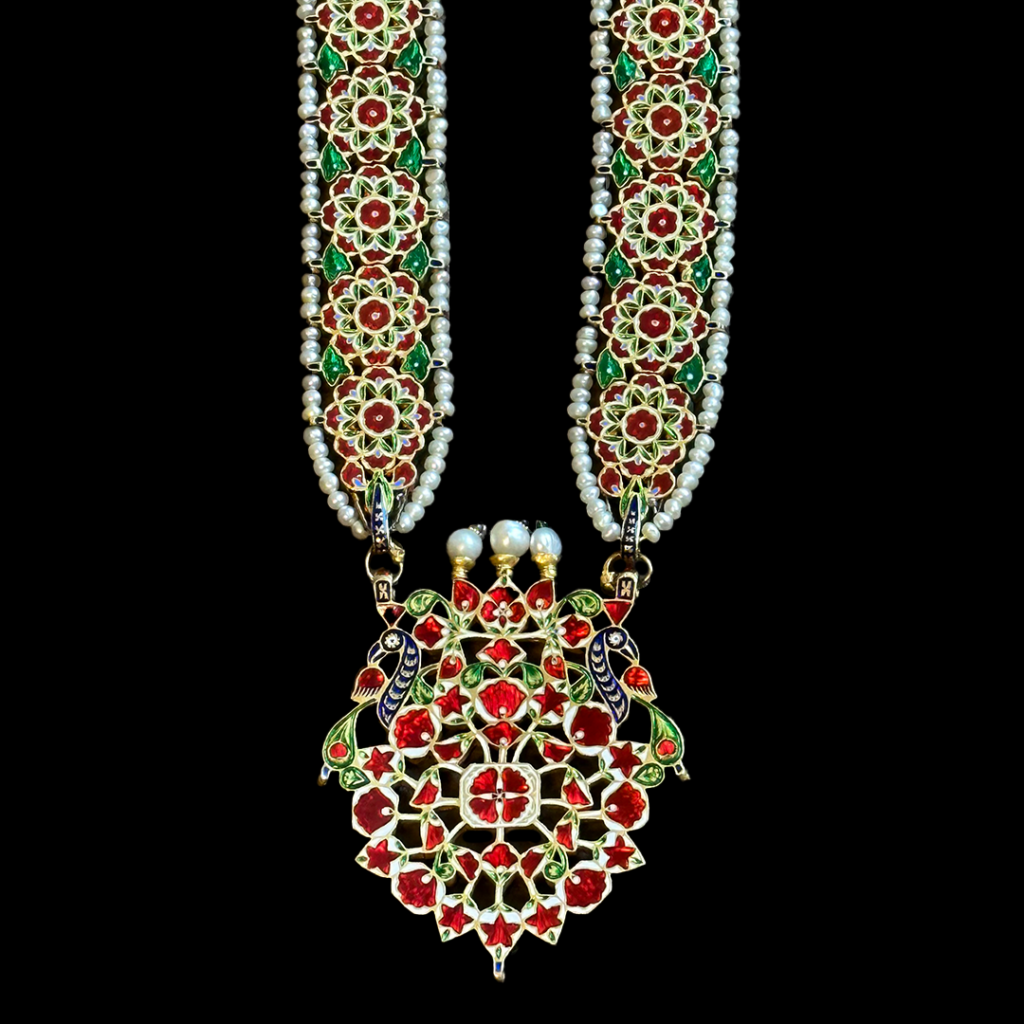
The Art of Meenakari
Meenakari is a complex multistep enameling technique. The process starts with a copper or silver base, although the royals were known to use a gold base in their jewels. In meenakari, a design is drawn onto the base with a fine tipped brush and then the metal is engraved with the pattern to create hollows for the enamel. After the design is engraved it is fired in the kiln to fuse the design to the surface of the metal. After the engraved metal is fired, it is given a base coat of white enamel and the piece is fired again to set the enamel. The colors are added to the hollows using a brush. The enamel must dry fully before the next step which is to polish the enamel with a mixture of charcoal and oil to remove rough edges and excess enamel. The piece is fired one last time to give it a glossy finish and then gems, beads and findings are added.
It’s not just the front of a piece of Mughal jewelry that has enameling. The back of these jewels are enameled with highly detailed and intricate patterns that make the back as beautiful as the front. Flowers, birds and paisley were important motifs for the back of the jewelry. These themes are a reflection of another one of the Mughal royals loves — lush gardens and nature.
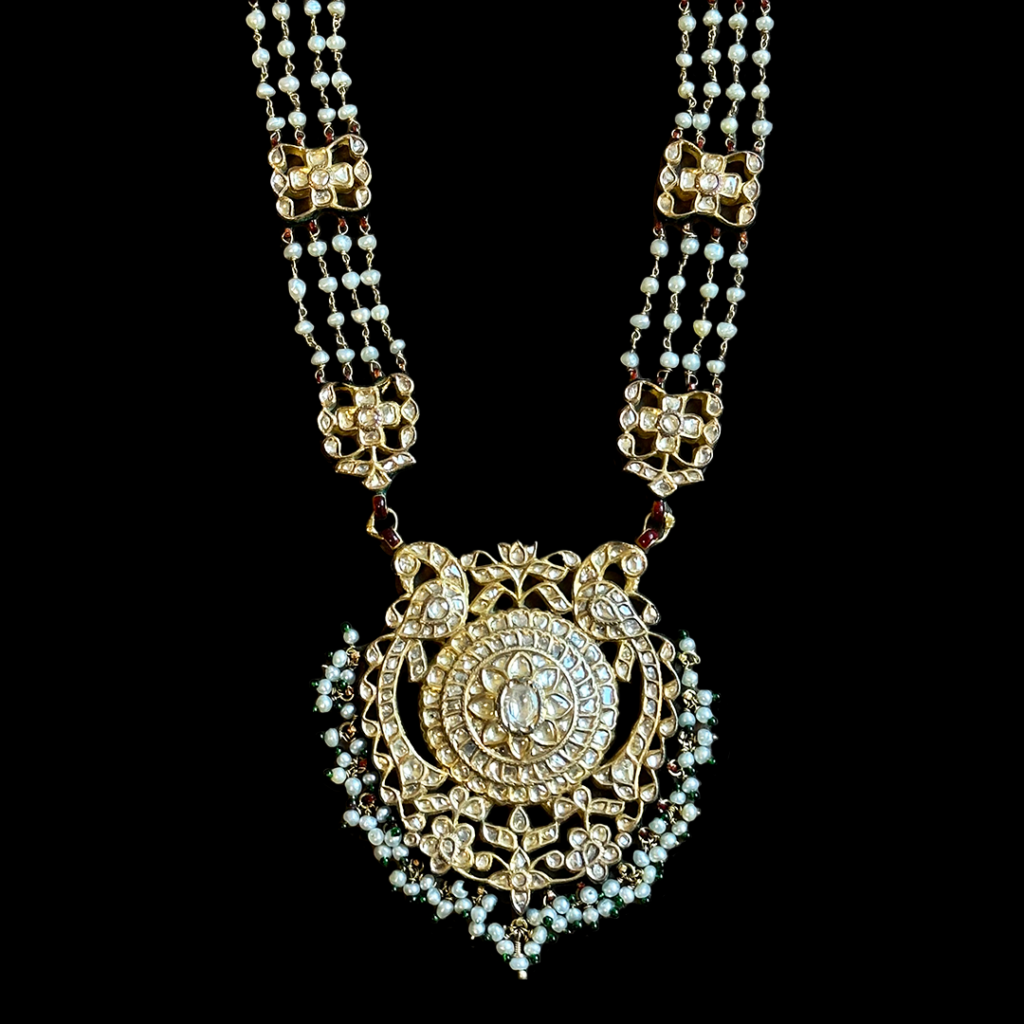
Spiritual Symbolism
The Mughal rulers were very wealthy and had huge stashes of gems in their treasuries to use in jewelry. In Mughal jewelry gemstones and colors had spiritual significance with each having its own meaning. Rubies symbolized power, emeralds were for eternal life and pearls represented purity and elegance. When diamonds were used, they were left in their natural form so that they retained their mystical power. Red stood for passion, blue for tranquility and green for fertility. Gems came from a variety of sources, diamonds came from the Golconda mines in India, pearls came from the Persian Gulf and one of the most favored gems, emerald, came from South America. Emeralds were often inscribed with a personal message or a verse from the Koran and sometimes they were also carved with floral motifs. Turquoise, lapis lazuli, rock crystal, sapphires and nephrite jade were also used in Mughal jewelry. Spinel, often mistaken for ruby was also frequently inscribed and set in jewelry.
Once owned by Mahrajahs and Mahranis, Mughal style jewelry used the finest gems available during those years and the best artisans to create their jewels. While Mughal jewelry is still produced in India today, mostly in the Jaipur region, antique Mughal jewelry is difficult to find as much of it was taken apart and sold off, while other pieces are held in private family collections. The Mughal empire covered around 300 years, but its legacy of art and jewelry lives on for jewelry collectors today.
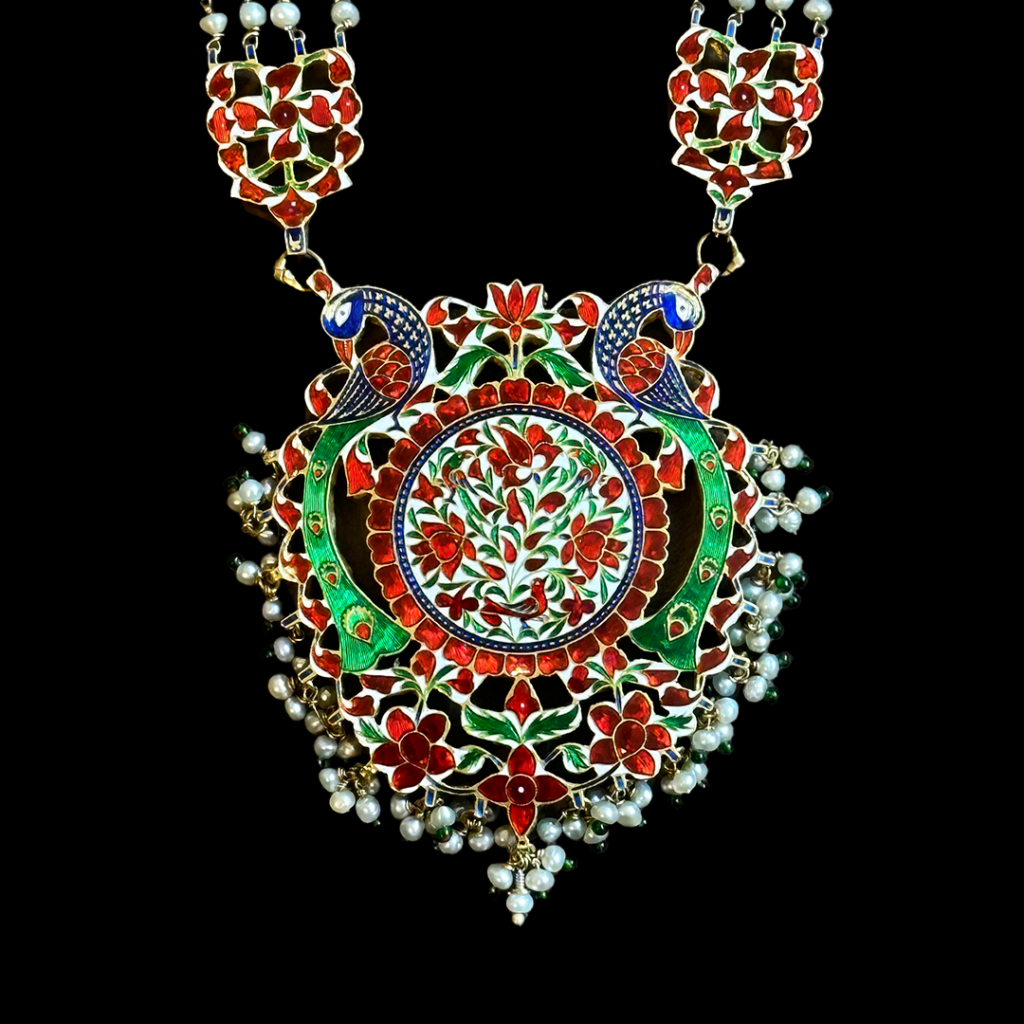
Featured image (top of page): Akbar the Great, public domain, WikiCommons.
Authored by Amber Michelle
